A burning glimpse into the future: Interactive map shows what the climate will look like in your city in 60 years — with terrifying results
A cold, rainy summer may not be something to look forward to, but experts now say Britons should enjoy it while they can.
This interactive map, developed by scientists at the University of Maryland, gives you a terrifying glimpse into the scorching future of your city 60 years from now.
More than half the planet is already expected to experience a different climate by the end of the century.
Experts predict that London’s summers will be 4.6°C (8.3°F) warmer and 10 percent drier, giving the city a climate similar to southern France.
Lead researcher Matthew Fitzpatrick of the University of Maryland said: “Everything is moving towards the equator in terms of the climate coming our way.”
This interactive map offers a terrifying glimpse into Earth’s scorching future by showing what your city’s climate will look like in 60 years
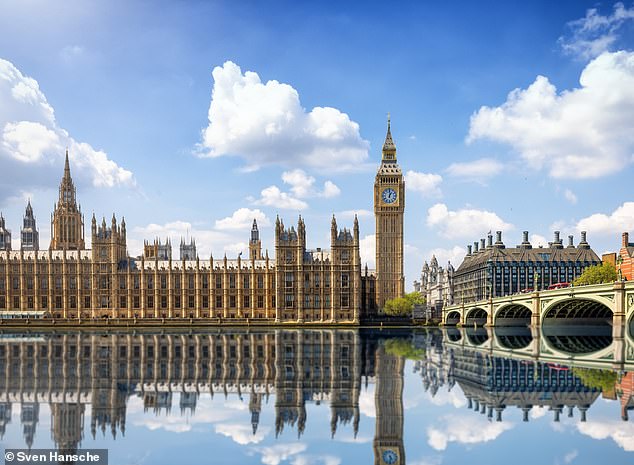
Experts predict that summers in London will become 4.6°C (8.3°F) warmer and 10 percent drier, giving the city a climate similar to the south of France.
To see what your city will look like in 60 years, follow This link gives you access to the interactive map The Future Urban Climates.
Use your mouse or tap to navigate the map. Use the plus and minus signs in the upper right corner to zoom in or out.
Want to know more about a city’s future? Tap the purple circle representing the city or search by name using the bar at the top left.
An information window will appear with information about how the summer and winter climate will change over the next 60 years according to the expert’s predictions.
The map also shows a line connecting your city to a place on the map that currently has the same climate.
For example, if you select Edinburgh, you’ll see that the Scottish city is expected to experience a temperature rise of 4.1°C (7.4°F) in summer and become 8.5 percent drier.
If that doesn’t sound too bad, the data also shows that winters in Edinburgh are expected to become over 13 percent wetter, as warmer air holds more moisture.
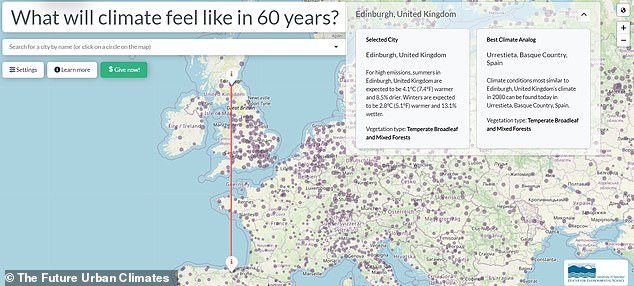
To use the map, simply select the city you want to know more about to learn more about its predicted future climate.
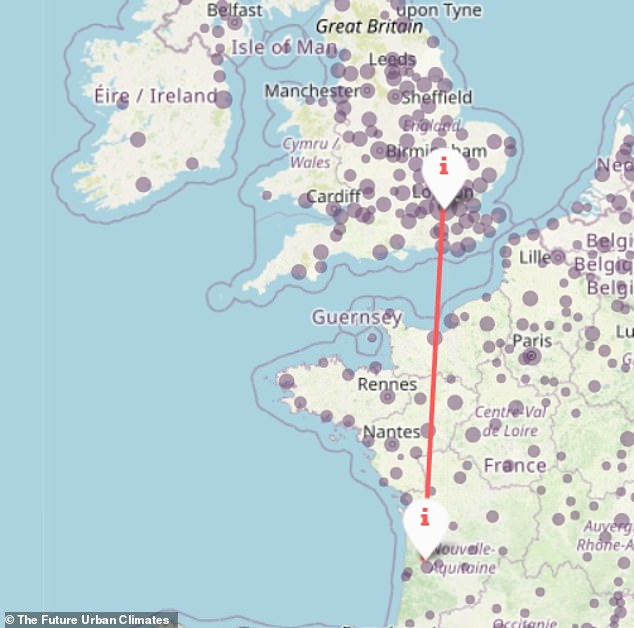
This map shows that by the year 2080, London will have a climate similar to that of Labarde, France
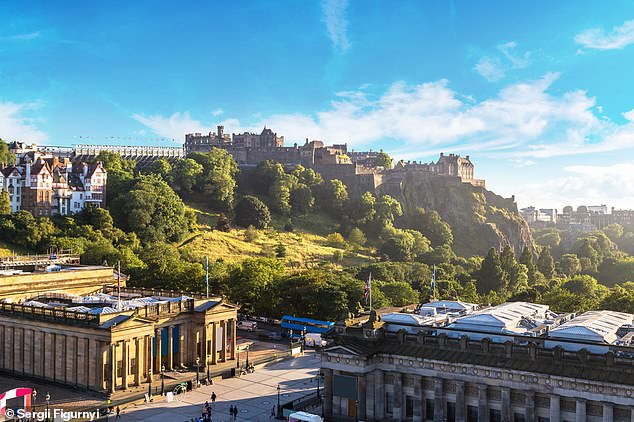
Edinburgh is expected to see a temperature rise of 4.1°C (7.4°F) in summer and become 8.5 percent drier
As you can see in the interactive graph, these changes will mean that in 60 years’ time, Edinburgh will have a climate similar to that of the current Basque Country in Spain.
The map makes its predictions based on data from the Intergovernmental Panel on Climate Change (IPCC) report.
Using that data, the researchers compared 40,580 places around the world with nearby locations that currently have the predicted climate for 2080.
This shows that summers are becoming warmer and drier, followed by milder and wetter winters.
Dr Fitzpatrick says: ‘In 50 years, cities in the Northern Hemisphere will look much more like cities in the South.’
The data also show how these changes can be mitigated through proactive measures.
Under ‘Settings’ you can select ‘What if we reduce emissions?’ to see how the climate in your city would change if we met the limits set in the Paris Climate Agreement.
For example, if we reduce emissions now, the temperature in Liverpool will only rise by 1.4°C (2.6°F) instead of 4.5°C (8.2°F). Liverpool’s climate will then be similar to that of Brittany, France.
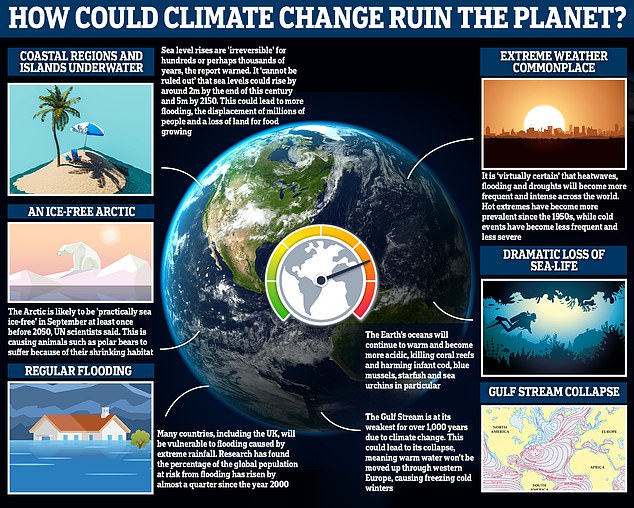
If temperatures continue to rise, there could be devastating consequences for the Earth, including a dramatic loss of marine life, an ice-free Arctic and more frequent ‘extreme’ weather.
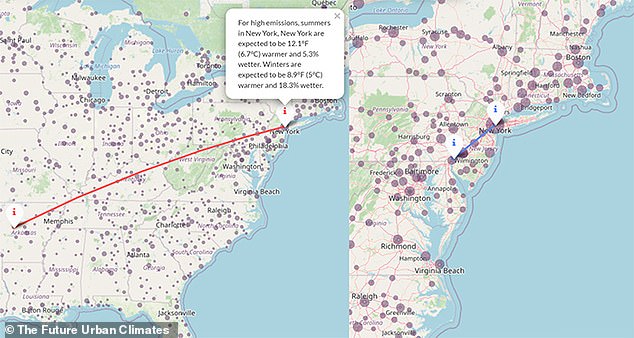
The map also shows how the climate would change if emissions were reduced. You can see how different the change is between the high emissions scenario (right) and the low emissions scenario (left)
So far, these changes have been most pronounced in Europe, North America and Oceania, where climate zones are already shifting.
According to 2015 estimates, by 2010, nearly six percent of the Earth had already shifted toward warmer, drier climates, compared to 1950.
However, the impacts will be greatest around the equator.
Dr Fitzpatrick says: ‘The closer you get to the equator, the less good a match there is for the climate in areas like Central America, South Florida and North Africa.
‘There is no place on Earth that gives a good picture of what those places will look like in the future.’
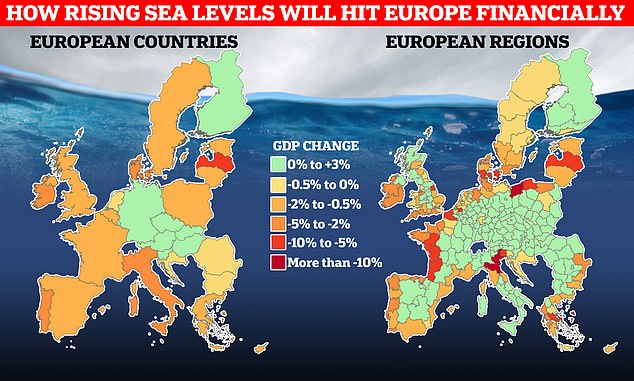
The costs of rising sea levels are subtracted from a country’s gross domestic product (GDP). This map shows the countries most affected (with the largest decline in GDP due to the costs of rising sea levels) in red and orange, with the least affected countries in green
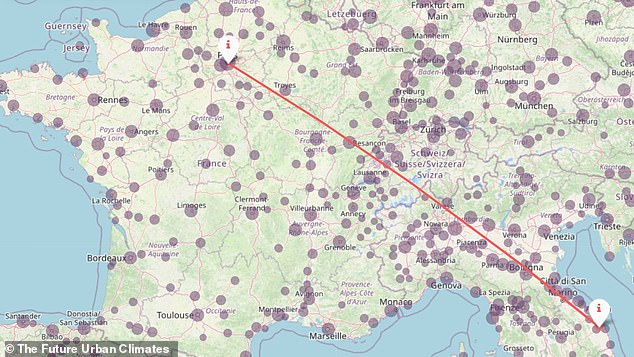
In 60 years, Paris will have the same climate as parts of northern Italy as continental Europe experiences some of its most radical climate changes
These regions are home to 40 percent of the world’s population, meaning that 3.3 billion people could one day experience climates more extreme than anywhere else on Earth.
Some experts even warn that some areas could eventually become uninhabitable as extreme temperatures and strange weather events become more common.
This year, extreme temperatures have already caused large numbers of deaths worldwide.
It is striking that this year during the Hajj to Mecca, Saudi Arabia, at least 1,300 people died due to the heat.
Dr Fitzpatrick says: ‘I hope it makes a lasting contribution to the discussion about climate change.
He adds: ‘I hope this will help people better understand the magnitude of the implications and why scientists are so concerned.’
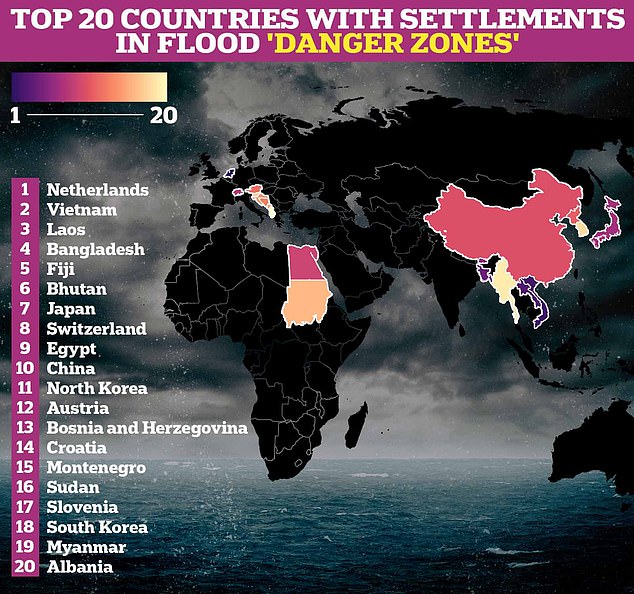
Scientists have revealed the 20 countries with the highest number of settlements that are susceptible to potentially deadly floods due to climate change
